Growing plump and juicy tomatoes is a process that begins when you enrich your garden soil at tomato planting time with the nutrients that tomato plants need to grow big and strong. Soil nutrients help to support tomato plant flowering and fruiting, but they also give tomato plants the energy they require to leaf out during their initial stage of growth and develop a hearty root system. Not to mention, with the right tomato planting hole ingredients, you can help tomato starts avoid transplant plant shock when they’re moved into your garden, and you can even prevent the dreaded blossom end rot, too!
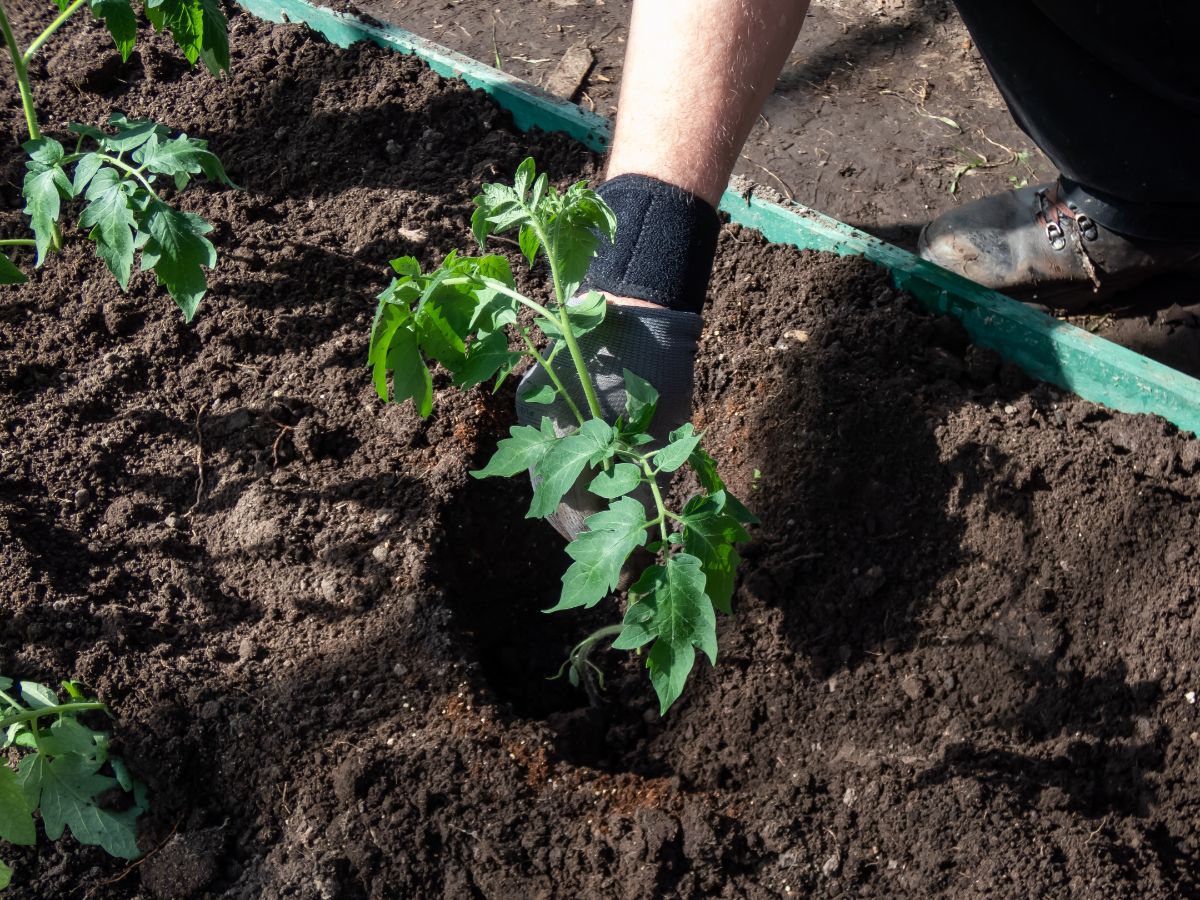
Today, gardening discussion boards are full of recommendations of what to add to tomato planting holes; however, not all of these recommendations are backed by science. Often, growers assume that their tomato plants are developing blossom end rot due to calcium deficiencies, but other factors may be at work. And even if plants are calcium deficient, some of the suggested ways to “boost calcium” may not work at all!
Because of all of the confusion about what ingredients to add and what ingredients to skip in tomato planting holes, we’ve decided to put together this quick guide on must-have soil additives for tomato health and growth. Along the way, you’ll find some helpful tomato planting tips, and we’ll also bust through some tomato planting myths as well!
Jump to:
- 4 Soil Supplements to Add to Your Tomato Planting Holes
- 1. Compost, worm castings, or aged manure.
- 2. Lime.
- 3. Tomato fertilizer.
- 4. Gypsum.
- What about blossom end rot?
- Should I add coffee grounds to my tomato planting hole?
- Should I add crushed eggshells to my tomato planting hole?
- Should I add antacids to my tomato planting hole?
- Should I add Epsom salt to my tomato planting hole?
- Frequently asked questions
- Why put an egg in the hole when planting tomatoes?
- What is the best fertilizer for tomatoes?
- Are banana peels good for tomato plants?
- How do I make my tomatoes bigger?
- Why won't my tomatoes get big?
- How do I know if my tomatoes need calcium?
- Summary
4 Soil Supplements to Add to Your Tomato Planting Holes
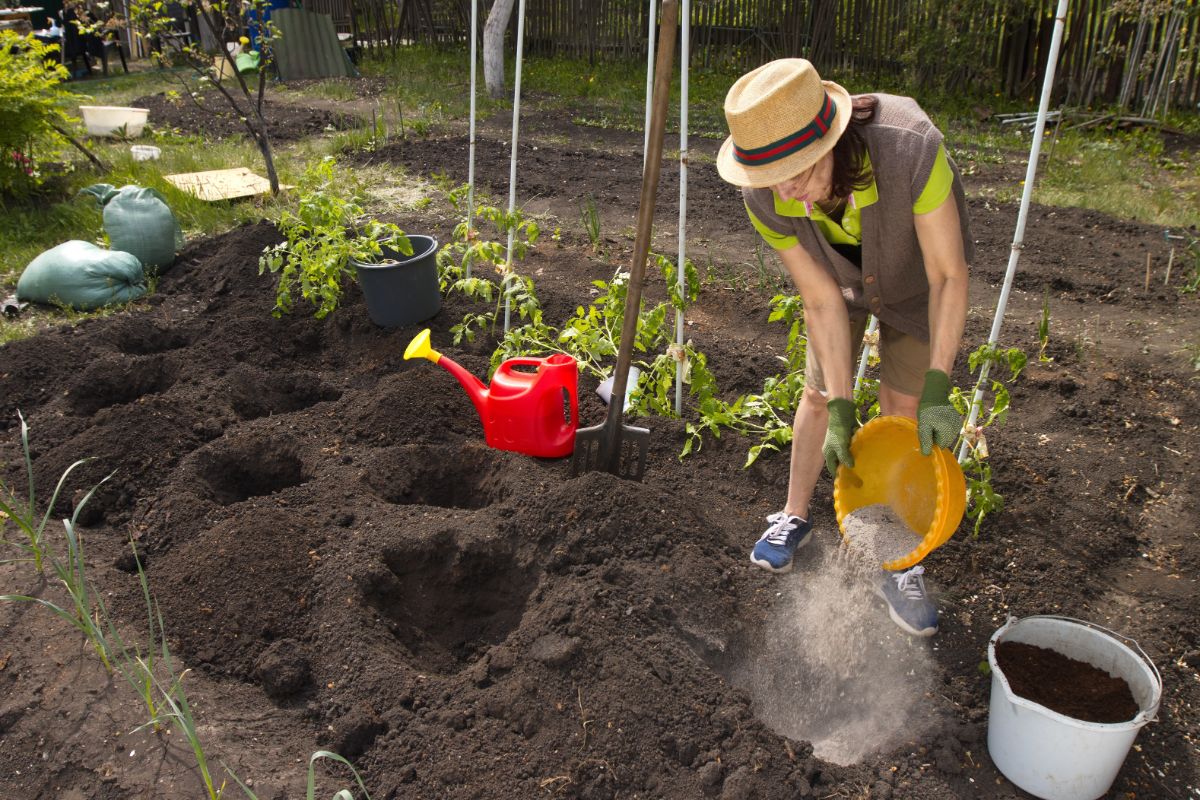
If you want to grow the healthiest and most productive tomato plants around, you need to focus on the soil in your garden. Tomato plants are heavy feeders, so they need plenty of rich and well-draining soil to grow in. They also prefer slightly acidic conditions (with a pH of between 6.2 and 6.8), and they may need a bit of extra calcium, too.
While you can technically improve your soil during the growing season, this is not the best option since you’ll already have plants growing in your garden, and you may accidentally disturb their roots as you dig in extra soil nutrients. Instead, if you amend the soil before you plant tomatoes or during the planting process itself, you can set your tomato plants up for success and encourage tomato roots to settle in. Below, you’ll find some of the best tomato planting hole ingredients, many of which can be used together, but they also function well on their own!
1. Compost, worm castings, or aged manure.
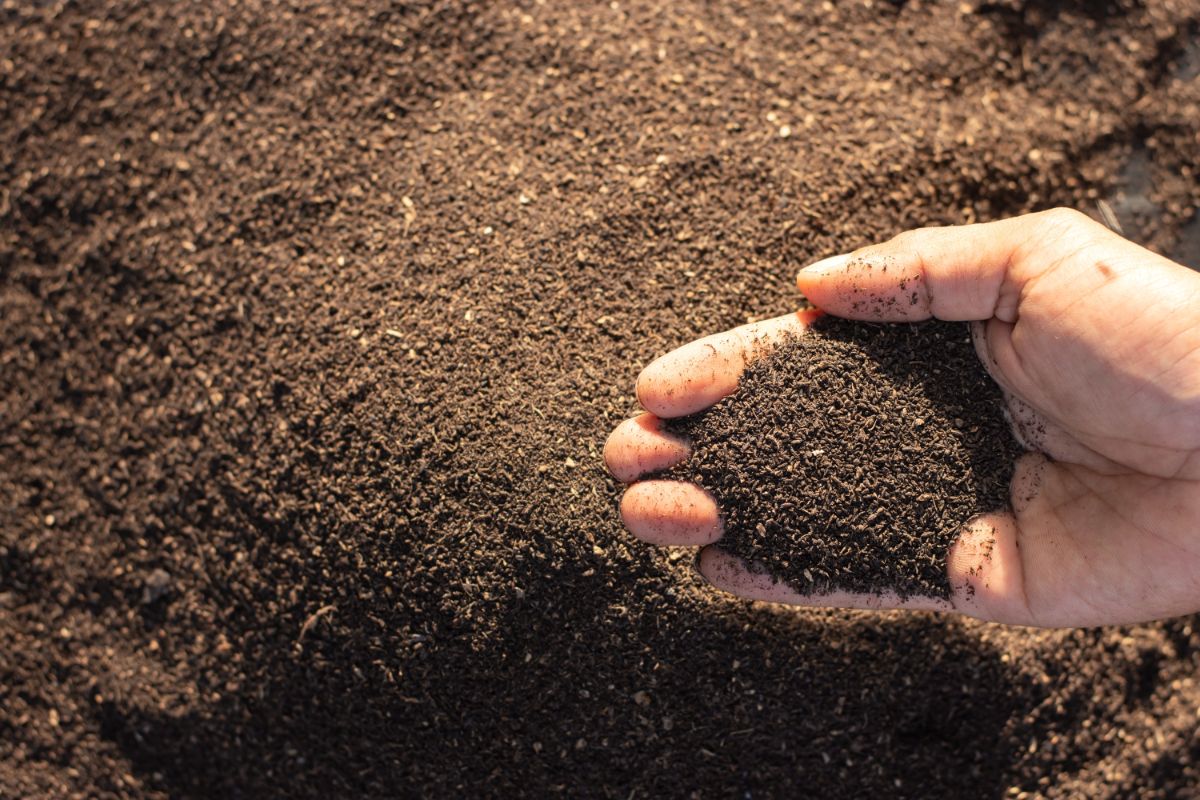
The single most important ingredient you need to grow thriving tomato plants are soil amendments like compost, worm castings, or aged manure. These three products can be used together, or you can decide to apply just one of these soil amendments around your tomato plants. Best of all, you can make all three of these products at home, which makes them super budget-friendly to use.
Compost, worm castings, and aged manure are rich in the macro- and micronutrients that tomato plants need to grow, flower, and fruit. When added to planting holes, compost, worm castings, and aged manure function as slow-release fertilizers, feeding plant roots over the course of many weeks or months. You’ll typically get good results if you amend your soil at planting time with any of these products; however, you can also use these soil amendments as top dressings or side dressings for tomato plants throughout the growing season.
Aside from supporting the growth of tomatoes, compost, worm castings, and aged manure also improve the texture of soil and make it easier for plant roots to spread. Whether you have sandy, clay-heavy, or rocky soil, these three products can help, and they can also make soil drain better and retain water better as well. That translates into less worry for you, and you also won’t need to water your plants as much during the growing season!
To apply compost or aged manure, simply mix 2 to 3 handfuls of the product of your choice into tomato planting holes and incorporate the compost or manure into the soil so that it’s evenly distributed. Then, locate your tomato plant, start in the planting hole, backfill it in with soil, and give your new tomato plant a good, deep drink of water. If you want to use worm castings instead, follow the same process, but you will only need about ½ to ¾ cup of worm castings since castings are quite concentrated.
Just as you can use worm castings, compost, and manure together, you can use products in conjunction with the soil amendments listed below. Just make sure that if you’re using manure, you age it properly first, as some livestock manures can burn plants when they’re applied fresh.
2. Lime.
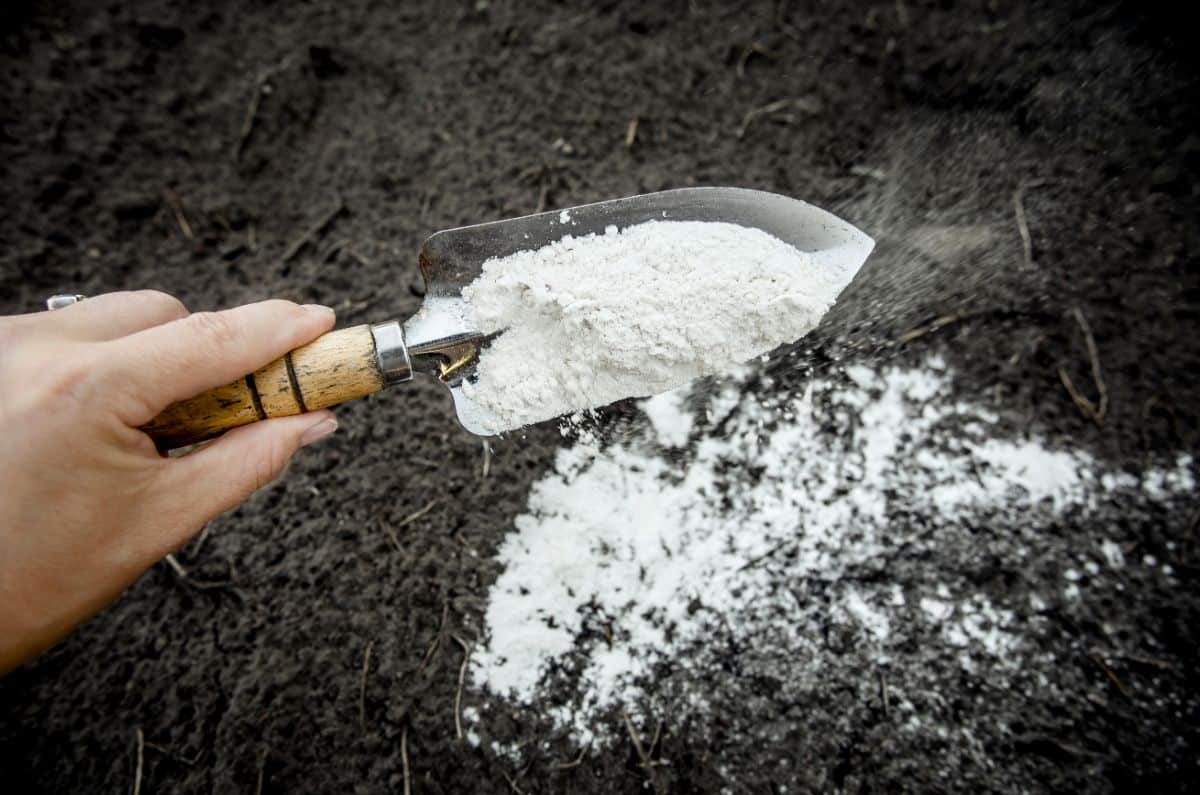
Whether you are starting a new garden or you’ve been growing plants for a while, it’s always wise to test your garden soil at least once every 3 years. Soil tests can be performed at home, but you will get even better results if you send your soil samples away to your local cooperative extension office. Some gardeners are reluctant to test their soil, but this is the single best way to ensure that your soil is healthy enough to support thriving tomato plants.
Soil tests will tell you if your soil is lacking in any particular nutrients, but more than that, soil tests will also let you know what your soil pH levels are. Tomatoes grow best in slightly acidic conditions, but if tomatoes are grown in soil that’s too acidic (with a pH of below 6.0), tomato plants will start to absorb too much aluminum and iron, and this can interfere with the tomato plant’s ability to absorb calcium. If you’ve grown tomatoes for a while, you know that calcium is an essential nutrient for tomatoes, and if plants don’t get enough of it, they can develop blossom end rot!
Depending on the results of your soil test, you may not need to adjust your soil pH at all. But if your soil test results determine that your soil is too acidic, you can “sweeten” the soil and make it more neutral by adding garden lime. This product is approved for organic gardening, and lime can be added to tomato planting holes; however, you’ll get even better results if you apply lime to the area where you’d like to grow tomatoes 1 to 3 months before you intend to plant.
How much lime you will need to adjust soil pH will depend on how acidic your soil is and how large your garden space is. Generally speaking, soil test results will give you recommendations on how much lime to use for your exact garden space. However, a good rule of thumb is that you will need about 3 to 5 pounds of lime for every 100 square feet of gardening space to raise the soil pH up to between 6.0 and 7.0.
3. Tomato fertilizer.
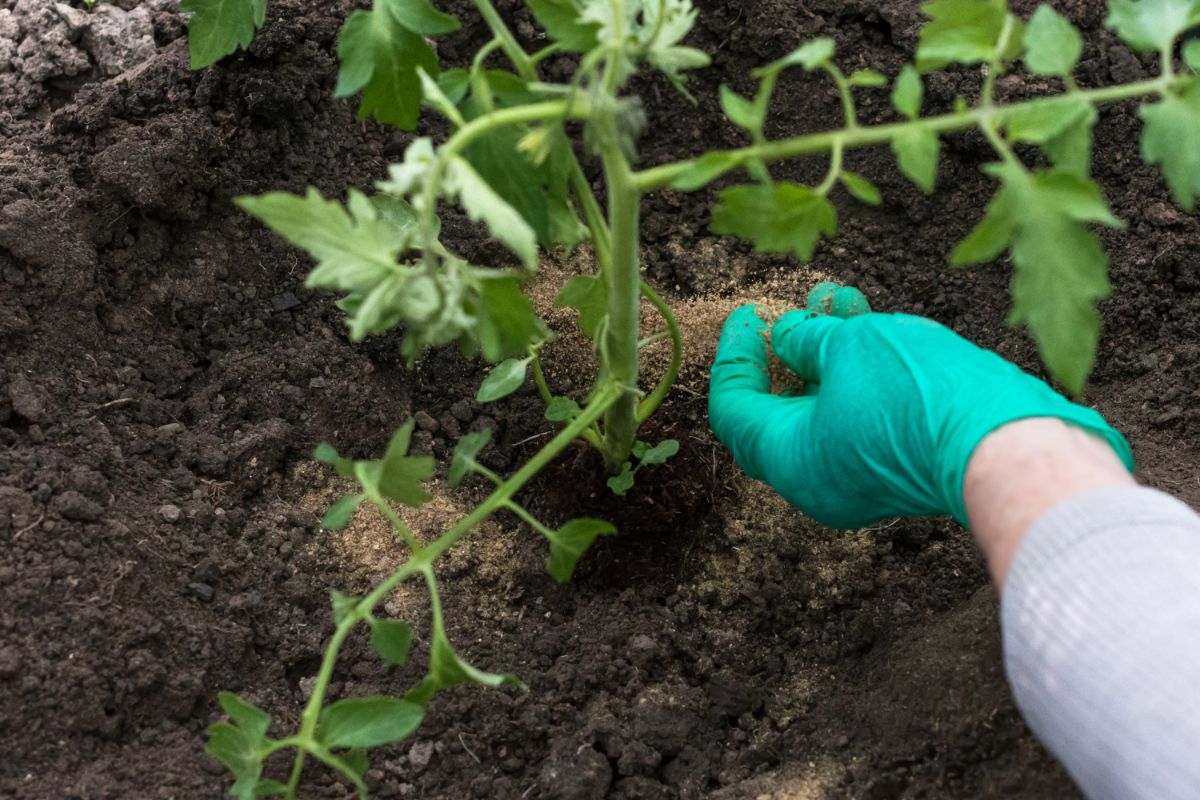
You may have your own specific type of fertilizer that you like to use, and most standard all-purpose fertilizers will work well for tomatoes. But if you really want to make your tomato plants happy, you can also find fertilizers that are specifically formulated for the unique needs of tomato plants. These fertilizers have a properly balanced ratio of nitrogen, phosphorous, and potassium, and they also include the micronutrients that tomato plants crave.
But while tomato fertilizers have an abundance of perks, one of the main reasons why you may want to seek out a fertilizer specially designed for tomatoes is that these products also typically contain a good deal of calcium. As we’ve mentioned before, calcium is critical for tomato plant health, and it helps to prevent blossom end rot.
Granular fertilizers tend to be the best fertilizers to use at planting time, while liquid fertilizers are typically applied throughout the growing season to give plants a nutrient boost as they mature. Granular fertilizers can be mixed right into your tomato planting hole when you’re transplanting tomato plant starts, and you can apply fertilizers in conjunction with compost, worm castings, aged manure, and garden lime as well. Follow the application instructions on your fertilizer packaging to determine how much fertilizer you will need to use, and be sure to stir the fertilizer grains in well into the surrounding soil so the fertilizer won’t burn your tomato plant stems and roots.
4. Gypsum.
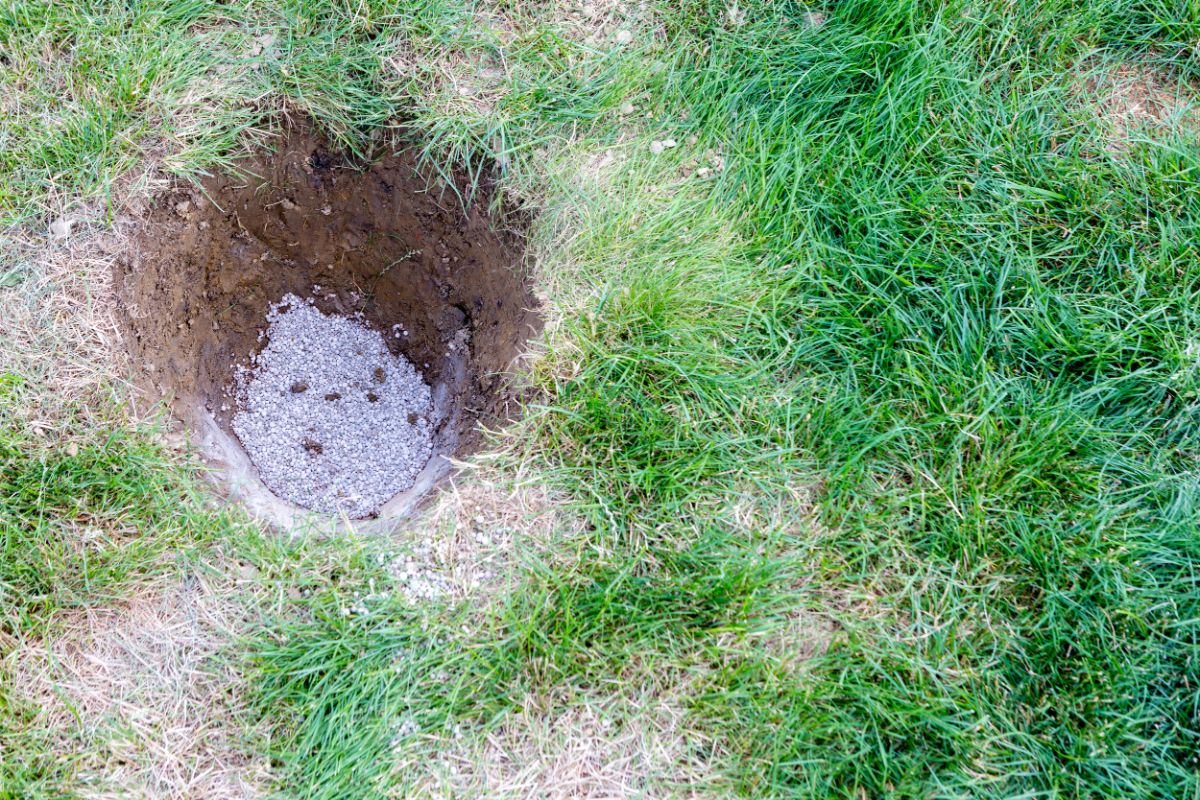
Garden lime can help neutralize acidic soils, and it also contains calcium that can boost soil calcium levels in gardens that are deficient. However, if your garden soil already has the right pH levels to keep tomato plants happy, you won’t want to add any extra lime as this can raise soil pH levels so high that it will cause other plant issues. But what do you do if your garden soil has the right pH but the soil is calcium deficient?
The answer is… add gypsum! Gypsum is an all-natural, calcium-rich mineral that comes from rocks, and it’s approved for organic gardens. Like lime, it will boost calcium levels around tomato plants, but it won’t mess with the soil pH. This can help prevent blossom end rot and keep tomato plants growing strong and productive through the growing season ahead.
If you are using a tomato fertilizer that already contains calcium, you may not need to apply extra calcium in the form of gypsum. Basically, if you have calcium-deficient soil, you can choose to add calcium either from fertilizer or gypsum, but you don’t want to use both unless your soil calcium levels are super low.
A soil test will help you determine if you need to add extra calcium, and it will also give you recommendations on how much gypsum to apply. But in general, you’ll want to use about 1 cup of gypsum per tomato plant or 1 to 2 pounds of gypsum for every 100 square feet of gardening space. The good news is that gypsum gets to work faster than lime does, so you should get results quickly if you use this product.
What about blossom end rot?
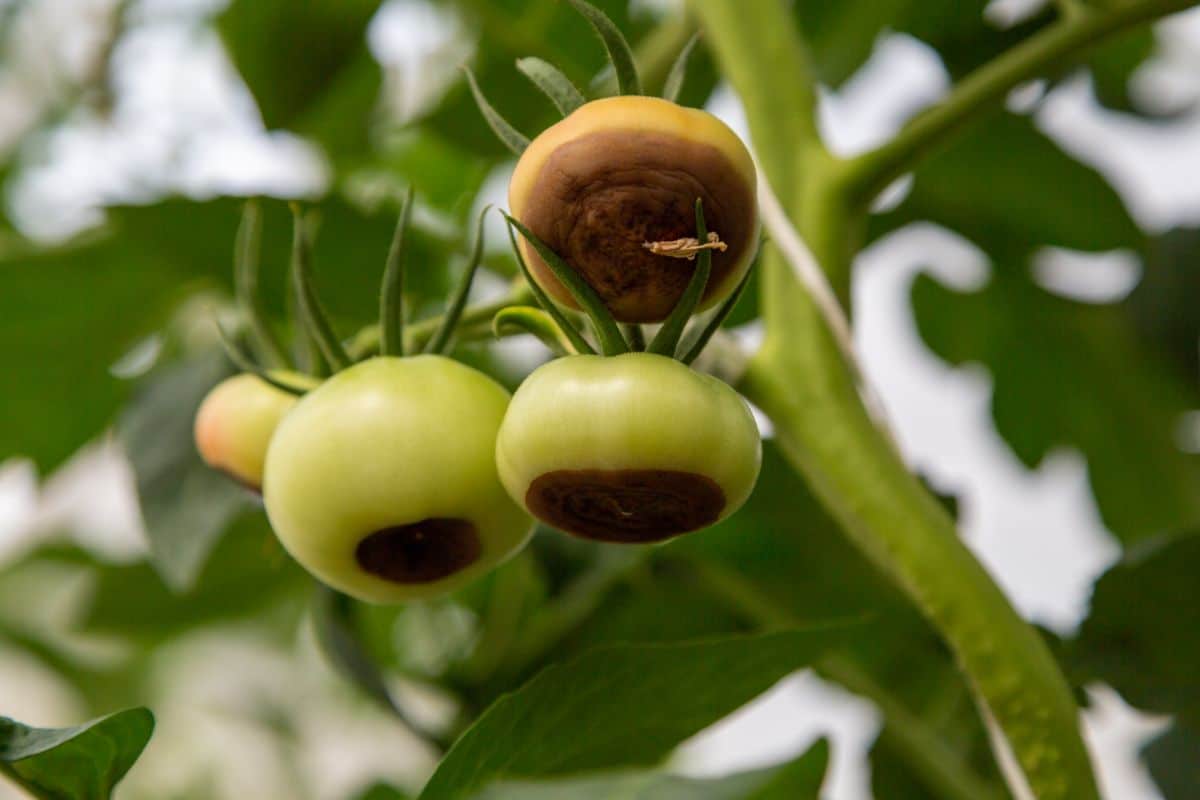
Blossom end rot is a relatively common issue, and it can do a lot of damage to tomato crops, so it’s no wonder why it weighs so heavily on many gardeners’ minds. However, blossom end rot often occurs due to issues that have nothing to do with soil quality, and soil amendments may not prevent this plant problem in all instances.
While blossom end rot can be caused by soil that’s deficient in calcium, most garden soils actually already have enough calcium, but tomatoes can exhibit blossom end rot just the same. If a soil test shows that you need to add calcium to your garden, by all means, add calcium in the form of gypsum or garden lime. But if your soil test shows that you have plenty of calcium in your soil, you’ll want to analyze your watering schedule instead.
More often than not, blossom end rot develops due to irregular watering practices. When tomato plants are watered sporadically, it can interfere with the plant’s ability to absorb calcium, and plants may exhibit blossom end rot and other signs of calcium deficiency even in calcium-rich garden beds!
To avoid this, be sure to water your tomato plants regularly so that the soil stays consistently moist but not soggy. You can achieve this by watering your plants every day or two, but you’ll get even better results if you water your plants with an automatic drip irrigation system. This is the single best thing you can do to prevent blossom end rot, and your tomato plants will grow even faster when they’re provided with regular watering.
Should I add coffee grounds to my tomato planting hole?
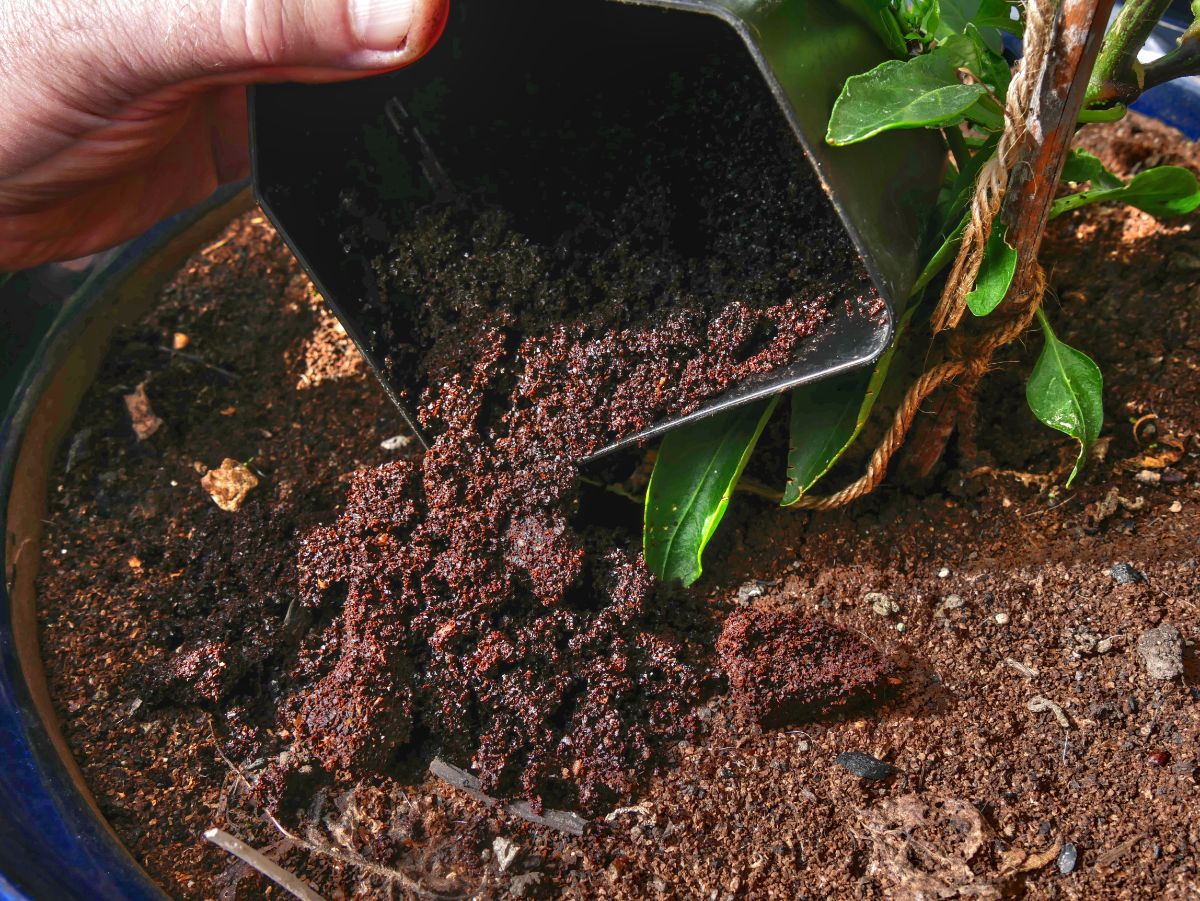
Coffee grounds are often touted as being useful for tomatoes and other garden plants. But do they actually work? The answer depends on how you’d like to use coffee grounds and the results you’re trying to achieve.
While coffee grounds can be acidic, they aren’t acidic enough to lower soil pH levels in any significant way. Used coffee grounds won't lower soil pH; only unused grounds will. So if you’re trying to adjust your soil pH with coffee grounds, it’s not likely to work that well. A better way to adjust soil pH is by using a soil acidifier or elemental sulfur.
But although coffee grounds may not be that useful for adjusting pH levels, spent grounds do contain a mixture of helpful plant nutrients, like nitrogen. As a result, coffee grounds can be used as a soil additive to boost plant growth, and they may even help to prevent disease-causing microbes. But coffee grounds don’t contain a complete nutritional profile, so they will work best if they’re used in conjunction with either compost, aged manure, worm castings, or tomato fertilizer.
If you’d like to try coffee grounds in your tomato planting holes, give it a try! Simply scoop 2 to 3 tablespoons of used coffee grounds into your planting holes, mix the grounds around, and then plant your tomatoes!
Should I add crushed eggshells to my tomato planting hole?
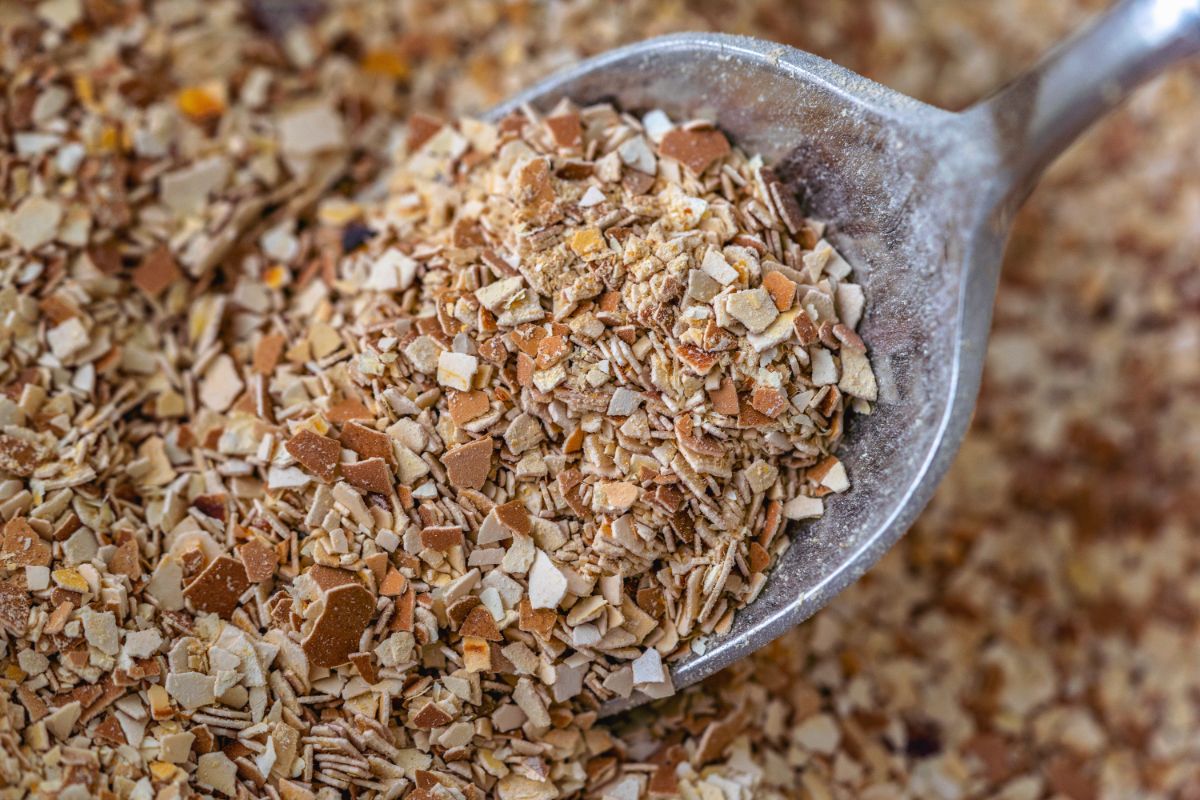
In an effort to prevent blossom end rot, gardeners reach for many types of products, including crushed eggshells. The theory is that eggshells contain lots of calcium, so they must be good at keeping blossom end rot at bay. But does this actually work?
Not really. As we’ve said before, blossom end rot is most commonly due to irregular gardening practices, and it’s much less likely to be caused by calcium-deficient soil. However, if your soil is actually calcium deficient, crushed eggshells aren’t the best way to boost calcium levels.
If you’ve ever tossed eggshells into your compost pile, you know that they don’t break down that quickly. And the same holds true if you place eggshells in your tomato planting hole: they don’t break down quickly enough to be effective. While eggshells won’t harm your plants, you’ll get much better results if you adjust soil calcium levels with faster-acting lime or gypsum.
Should I add antacids to my tomato planting hole?
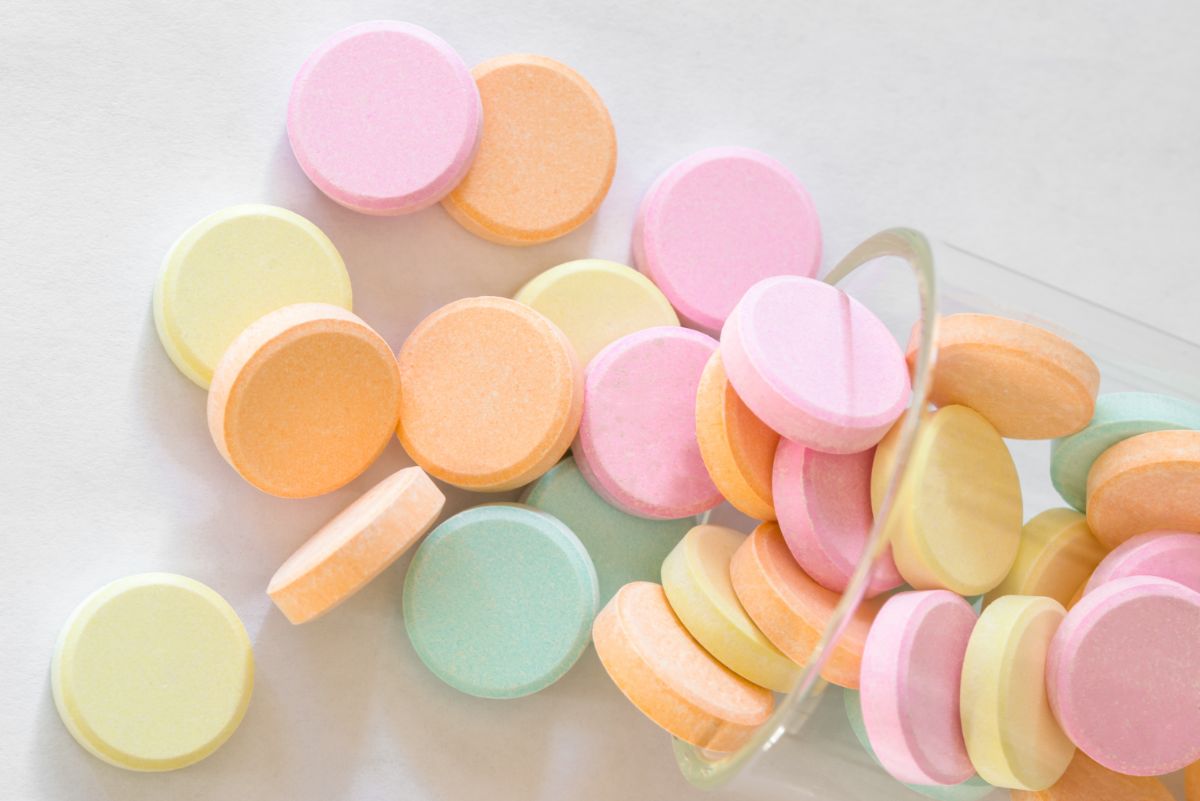
Many antacid tablets contain calcium, so it’s no wonder why they are a common go-to “solution” for blossom end rot. But placing antacid tablets in tomato planting holes just doesn’t work.
Since blossom end rot is mostly due to watering issues, plants often don’t actually need extra calcium, and there’s no real reason to supply the mineral with antacids. On top of that, antacids just don’t contain as much calcium as other garden products. If your garden soil is actually deficient in calcium, you’ll have better luck using fast-absorbing gypsum.
Should I add Epsom salt to my tomato planting hole?
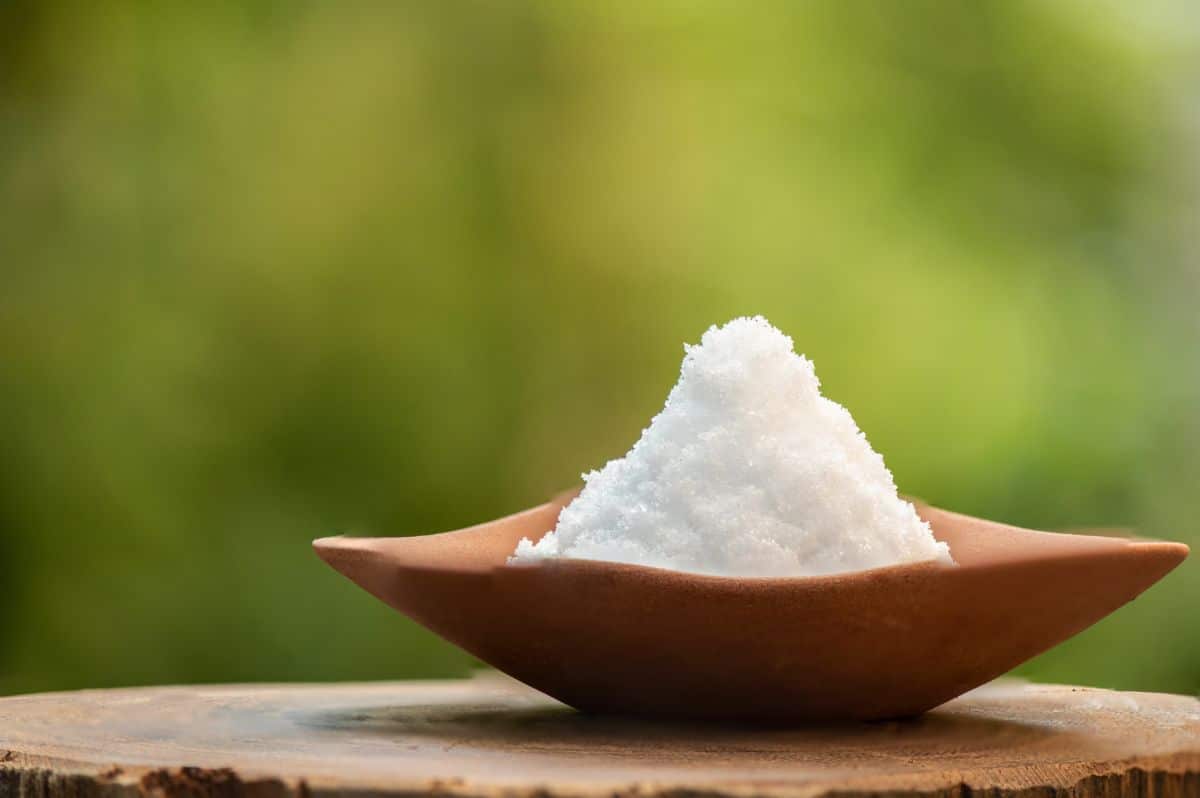
Like eggshells and antacids, many gardeners swear that pouring Epsom salt into tomato planting holes prevents blossom end rot. But there is no science to support this. Rather, there’s actually evidence that Epsom salts can actually make blossom end rot worse.
Despite the lore surrounding Epsom salt, this product does not contribute calcium to plants, but it does add lots of magnesium to garden soils. If your garden is deficient in magnesium, this might be a good thing. However, if your garden has an adequate amount of magnesium or low levels of calcium, adding Epsom salt can actually make it harder for plants to absorb whatever calcium exists in the soil!
As with the other alleged solutions to blossom end rot, consider this myth busted. You’ll have much better luck preventing blossom end rot if you use gypsum and lime and water your tomato plants regularly.
Frequently asked questions
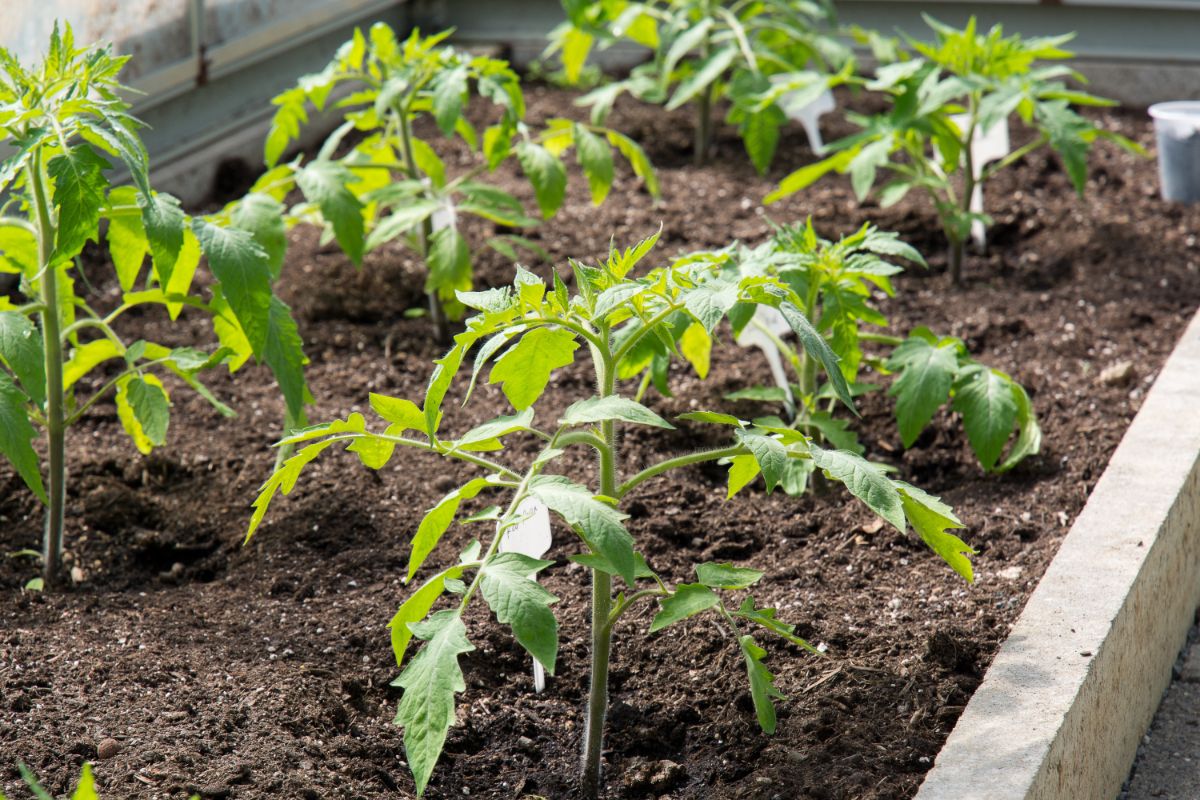
Why put an egg in the hole when planting tomatoes?
Just as some gardeners swear that crushed eggshells prevent blossom end rot, other gardeners use the whole egg in an attempt to boost calcium levels in the soil. As the story goes, this tactic has the added benefit of boosting soil fertility as the raw egg will break down and enrich the soil in the tomato planting hole. However, whether eggshells are crushed or whole, they just don’t degrade quickly enough to provide any significant improvement to soil calcium levels.
What is the best fertilizer for tomatoes?
Fertilizers especially designed for tomatoes are usually the best choices since these products contain micronutrients and minerals like calcium, which tomatoes crave. Tomatoes can also benefit from the addition of a general, all-purpose 10-10-10 fertilizer, which will provide a proper balance of nitrogen for leaf growth and potassium and phosphorous to support flowering and fruiting.
Are banana peels good for tomato plants?
Banana peels won’t harm tomato plants, but they won’t do much to help them out, either. If you add whole banana peels to your tomato planting hole, they won’t break down quickly, and it will take a while for the nutrients they contain to be usable for your plants. A better option is to add your banana peels to your compost pile and then use the finished compost in your tomato planting holes.
How do I make my tomatoes bigger?
Adding the right soil amends to your tomatoes is a great way to boost your tomato harvest yield, but there are other options, too! Making sure that your tomato plants receive enough light and moisture is a good place to start, but you may also want to stake up tomatoes to keep them growing strong. A well-timed pruning and pinching off tomato suckers are other helpful ways to increase the size of your tomatoes.
Why won't my tomatoes get big?
Undersized tomatoes can be caused by several different factors. Low fertility soil, lack of fertilizer, low light, limited water, pests, and diseases may all be to blame. But some tomato varieties also produce smaller fruit, so double-check that your tomatoes aren’t just small because of the tomato variety!
How do I know if my tomatoes need calcium?
Tomatoes that are deficient in calcium may be stunted, and they can also develop distorted leaf growth, and their leaves may turn yellow or lose color. When deficient plants fruit, they’ll often produce tomatoes with mushy, sunken, or browning bottoms – a symptom known as blossom end rot. However, the best way to determine if these symptoms are due to calcium deficiency or watering issues is by conducting a soil test.
Summary
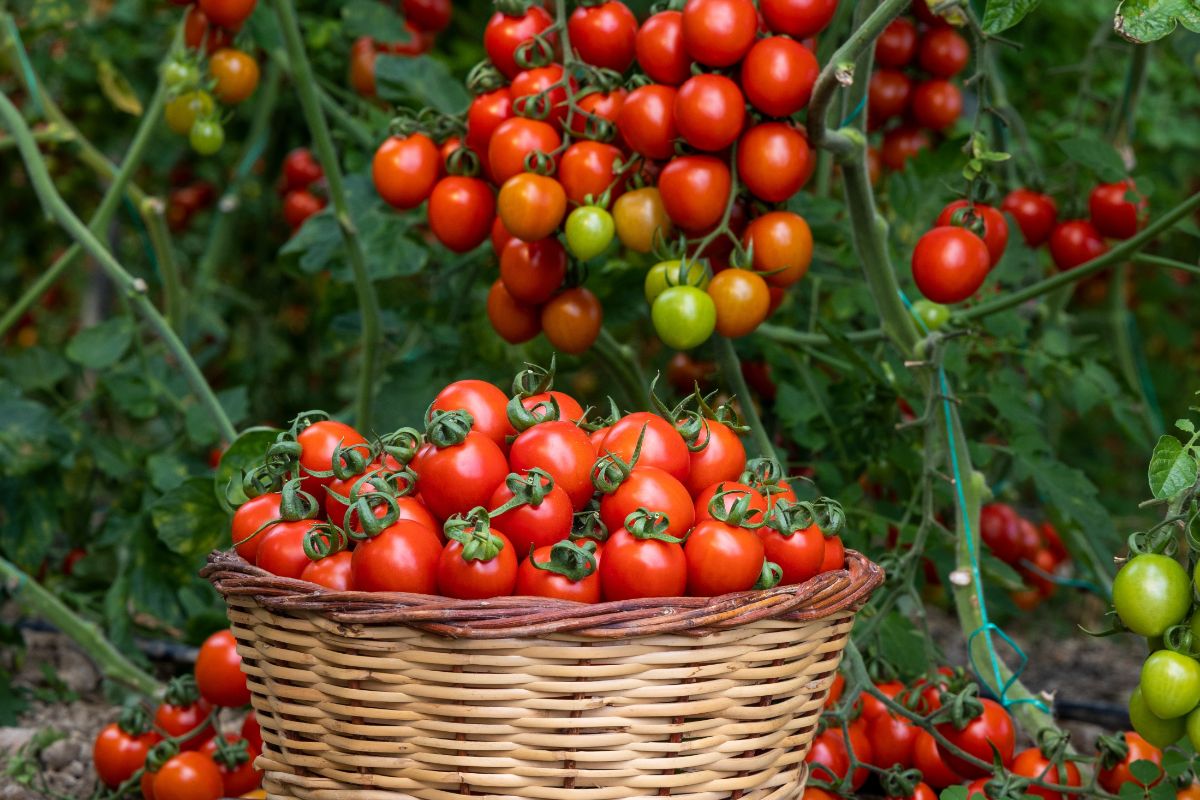
Growing healthy tomato plants begins with healthy garden soil, so it’s worth your while to invest in quality soil supplements to boost the growth of your tomatoes. Unfortunately, there’s a lot of misinformation about what products will and will not work on tomatoes. But by following the latest scientifically proven methods and applying products to tomato planting holes in the right ways, you can set your tomato plants up for a successful growing season to come!
For more tomato care tips, check out our guide on how to prevent and treat tomato blight, or read up on how to control tomato hornworms using all organic means.

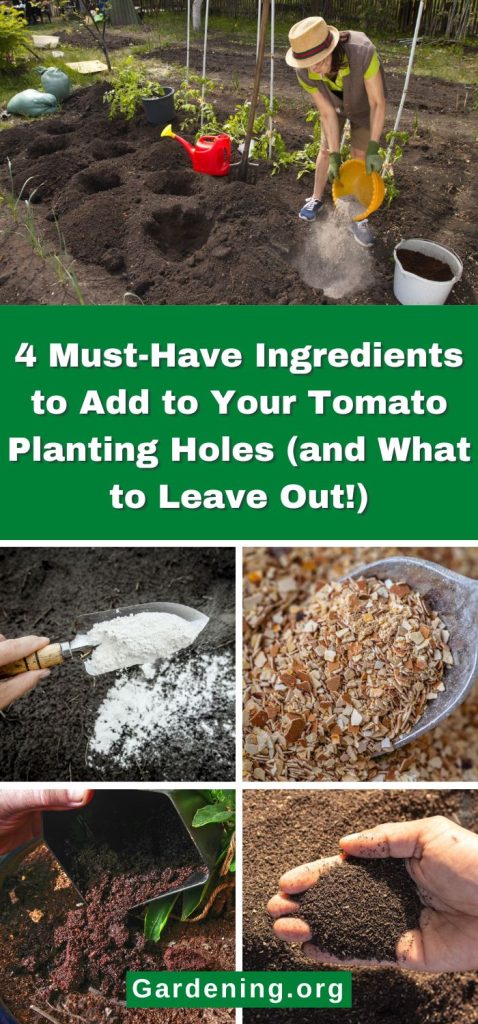
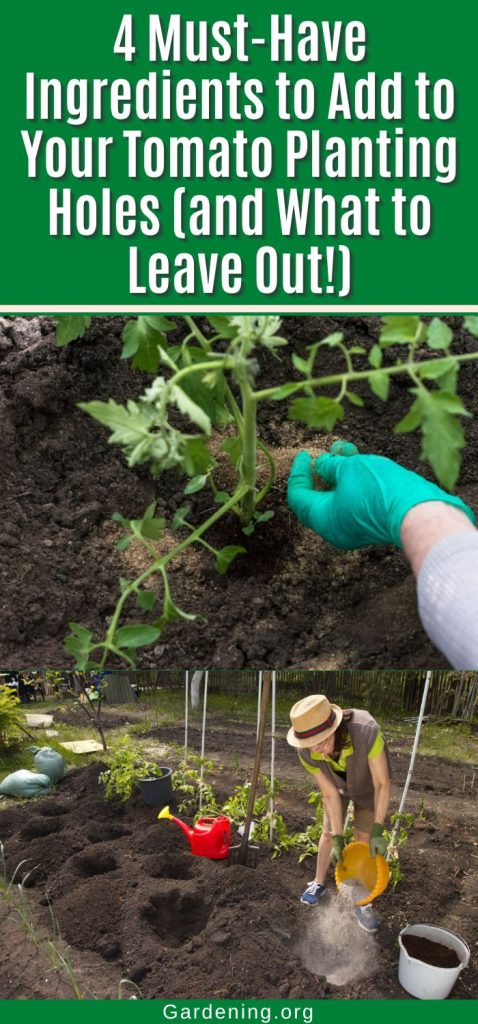
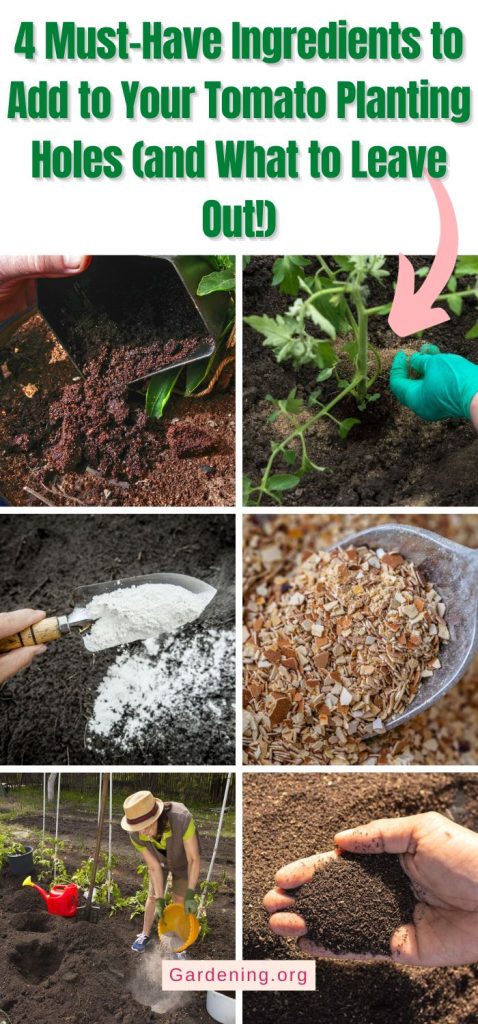
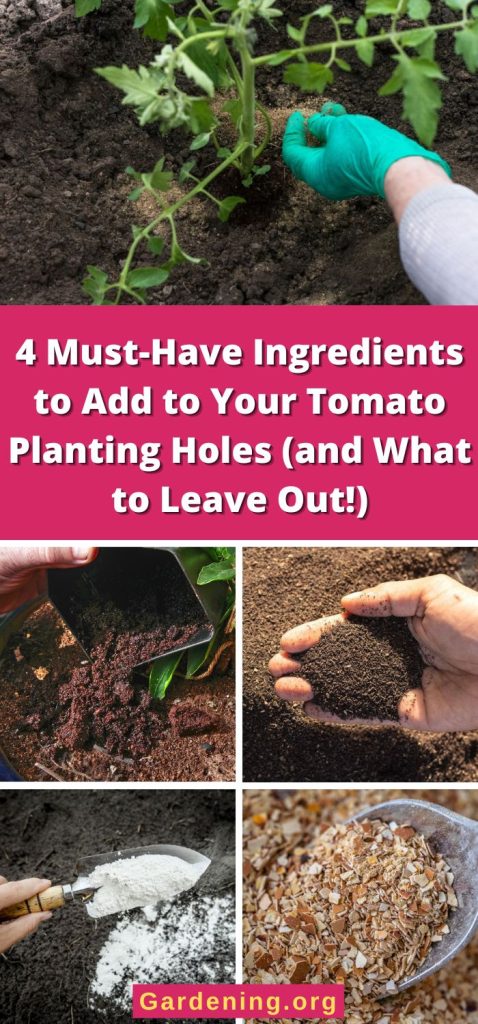

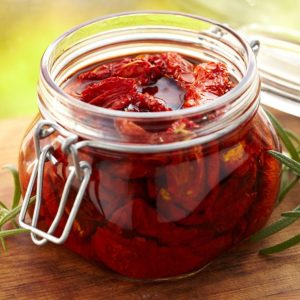
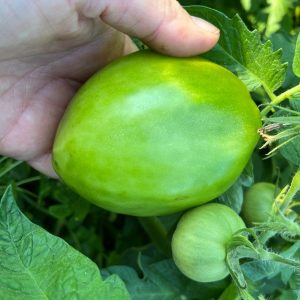

Leave a Reply